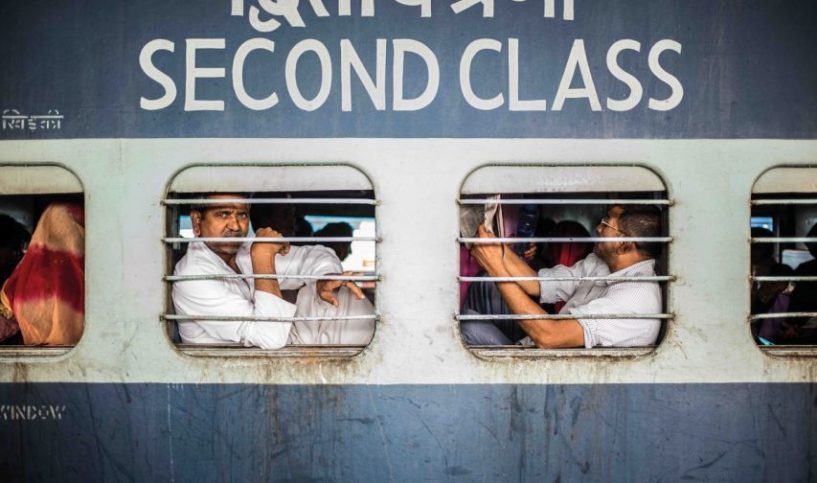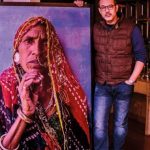Ethereal imagery and capturing the true essence of his subject’s soul – “serial entrepreneur” (his words, not ours) Omar Hikal has an extraordinary talent. A self professed photography addict, this Cairene [resident of Cairo, Egypt] took his first shot at a young age and didn’t put his camera down since – save for a brief hiatus that lasted a good fifteen years, but who’s really counting. On a journey of rediscovery, Omar has spent the last ten years remembering the joys of photographing people and day-to-day scenes from all around the world. With his wife, Samar, and his two sons Zein and Seif, Omar found the perfect muses to hone his skill.
On and off with his photography, Omar found himself focusing on the more “important” things in life and pursuing a career while sacrificing his hobbies. Driven by the photography guidance he had during school and his more independent researches, he reached for his camera once more in 1998 and picked up where he left off. “It wasn’t until around 2005 when I caught the bug and realized that photography would have to be a key part of my life,” and he hasn’t looked back since. Today, Omar has a beautiful coffee-table book and a couple of gallery exhibitions under his belt – proving that reconnecting with old hobbies is worthwhile. We managed to track him down after his latest photography excursion in India to ask him about the thing he enjoys most, photography.
When was the moment you knew you had to jump back into photography?
I don’t think there was any one moment, it was a process. I spent the first few years studying and getting to a level of technical ability that allowed me to feel comfortable with the camera again. I took advantage of whatever opportunities presented themselves and to learn from photographers whose work I admired, and then, I just shot. I shot everything! My kids, my friends, and even strangers.
What do you mean when you claim that photography is a “literal escape?”
I try to take a couple of trips a year where I am just shooting. It takes me away in every way – a different place, different language, different culture and different people. I gain a ton of perspective on what’s important and how happiness comes from the most unexpected sources – never what we think. Places like Cuba make you realize that happiness is about the people around you and about love and about music, not about material things at all. I kept hearing Cubans say (over drinks) how they “are poor, but happy.” That’s an escape that we often need.
Can you tell us about your traveling photography adventures? Which trip do you consider is the most memorable to you and why?
I would have to pick Cuba. Cuba was special in every way. Photographically speaking, it represented the departure from the very technical approach I exhibited previously. I realized that sometimes we focus on gear or on the minutiae of exposure or following certain rules – in Cuba it was mostly about the energy and the emotion of the people. I would love to go back again and I hope Cuba manages to give the world more than it takes once it opens up. Of course India was magnificent as well…
What did you bring back from your trip to India?
I brought back a feeling – that I only scratched the surface of this gorgeous country and its amazing people. India probably needs six months to do it justice. I know I’ll be back. I also came back with another great example of how community is the essence of our existence. In many “developed” cultures we lock ourselves away in our big homes or gated communities – but we long for a connection, for a community. You can see how colorful and warm the Indian culture is – and how connected to each other they are.
Has photographing people changed your perception of the world?
I’d like to think so – I’m still on my journey.
You collaborated with photographers Rawah Badrawi and Khaled Shukry, how was that process for you? Was it challenging to join forces with other creative talents?
Working with Rawah and Khaled was an absolute pleasure. They are both very talented and I would welcome the opportunity to work with them anytime!
What did the book Siwa: Legends and Lifestyles in the Egyptian Sahara capture in Siwa? What was the focus and purpose?
The Siwa project was almost accidental. The three of us (Khaled, Rawah and myself) were there on holiday and we fell in love with the oasis. We realized that this gorgeous place was practically unknown, a hidden gem in the middle of the desert. We decided we wanted to highlight it and at the same time raise money for the local charities. We were fortunate to attract support from sponsors and from the local community.
Are there any particular photographers who inspire you that you would like to work with in the future?
I spend a lot of time looking at other photographers’ work – I have a folder on my computer that is called “shots I wish I had taken”! I am a huge fan of Gregory Heissler, Joe McNally, Bryan Peterson as well as Mario Marino – would love to work with any of them! Also my friends Stephen Wallace, Arien Chang Castan and Toufic Araman are always inspiring in their differing styles.
What’s next for Omar Hikal?
I’m looking forward to heading to Ethiopia later this year to shoot the tribes of the Omo Valley with Bryan Peterson.
To check out Omar’s stunning photography, visit his website at www.omarhikal.com. For inquiries, you can email him at Ohikal@me.com.









